Once in a while, a new, unorthodox idea pops up in the hobby. Sometimes, that idea materializes into a product that raises eyebrows, and can potentially revolutionize the market. I remember things like that toilet-paper looking filter from D-D that never really caught on, or the biopellet reactor, which is still a topic of heated discussions. The product I am showcasing today, called P2O reactor, is one such idea, and it fits the bill almost perfectly. On the outside, it looks like a bunch off PVC fittings and some vinyl tubing, and trying to fit P2O reactor into any of the existing categories proves to be problematic. When Reef Toys, the manufacturer behind P2O, describes its product using phrases like “electrostatic utilization” and “saltwater cellular maintenance”, you know this is not your usual piece of aquarium equipment. In fact, I had to do some extensive research before I could even try to understand what this little device claims to do to help your fish tank ecosystem thrive. This is how it goes…
If you had to describe P2O with one word, “reactor” seems most accurate. The device consists of several black PVC fittings, a sort of venturi valve, and a piece of silver/gold (0.999) ion tab that sits inside the main part of the reactor. Once assembled, the entire device is meant to be hooked up to a circulation pump (not included) for a closed loop system. Alternatively, you can connect it to your existing plumbing, inline with the return line of the circulation pump, right before the water reaches the filter sock.
At a very basic level, P2O reactor is used to outgas dissolved carbon dioxide by creating a turbulent flow of air-water mixture that enters the sump. Reef Toys claims its device is a very effective way to get CO2 out of the aquarium water and into the atmosphere, lowering the water’s acidity, or raising pH if you will. I can believe this statement without any testing, as I have experience with CO2 dosing a planted tank; it utilizes a sump – water mixing with air (as with a “Durso” standpipe), and outgasses massive amounts of carbon dioxide very quickly (which, by the way, isn’t a good thing in an underwater garden). P2O reactor’s air mixing valve is quite different than what you find in a protein skimmer- instead of producing fine bubbles, it goes for volume, kind of like in a kitchen faucet’s strainer.
Electrostatic utilization: that term puzzled me the most. A silver/gold alloy that is mounted inside P2O (seen in the picture below) creates an electrostatic charge, which, according to the inventors, increases the discharge of CO2 dissolved in water, helps increase skimming rates (by eliminating harmful bacteria, much like an UV filter), and maintains cellular integrity using electric signals created by the water passing through silver/gold alloy.
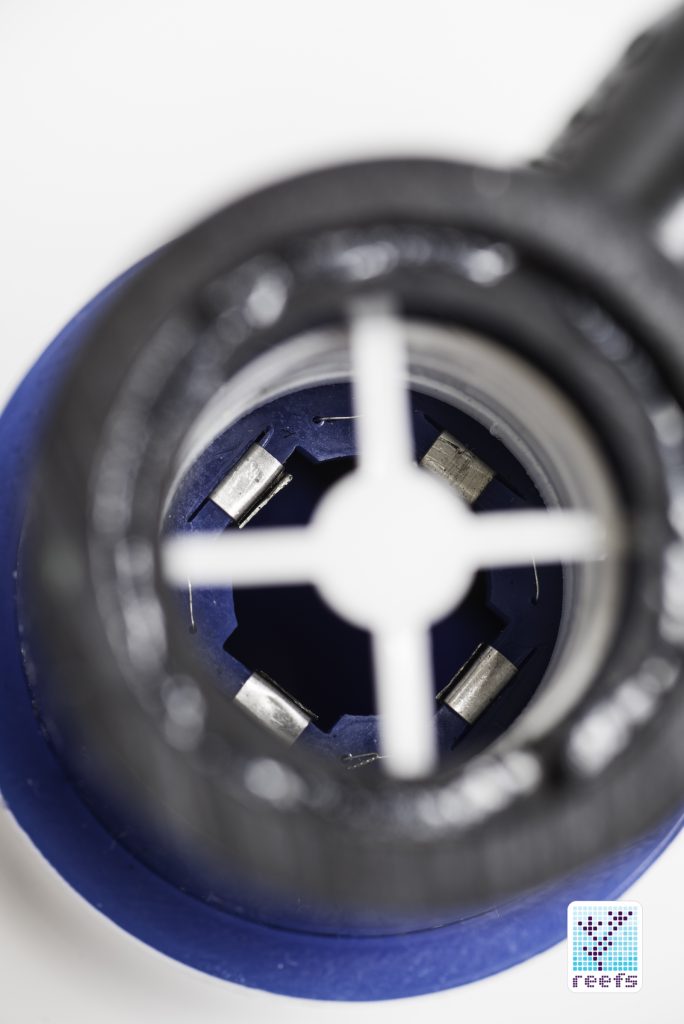
Reef Toys shared an article, originally published in Scientific American, on their Facebook page (here’s a link to the article), as proof that their device helps maintain cellular integrity within reef fauna tissues. But quoting a scientific paper about ongoing research performed in a controlled environment and claiming P2O reactor will work the same in a highly unpredictable one (a home aquarium), is not conclusive evidence, at least not to a skeptical aquarist.
P2O REACTOR BUILD/HOW DOES IT WORK
It is extremely difficult to understand P2O reactor – there is no manual shipped with the unit and the information on Reef Toys website is equally scarce. Fortunately, the inventors posted two YouTube videos showing how to put it together (you can find them on their channel), which certainly helps.
The package comes in a plain cardboard box with a short description label glued to the top. Inside, we have the main body of P2O reactor, which is made out of black PVC pipe fittings and barbed connectors, an air mixing valve with a short length of airline and air valve (that goes onto the pump intake), a set of plastic tabs designed for different sized aquariums that go inside the reactor body, and a piece of black vinyl tubing matched in size with barbed connector on the reactor. The kit does not include the return pump it needs to operate in a closed loop system; you have to purchase it separately. There are three models of P2O available, each designed for different-sized aquariums.
The YouTube video manual helps with putting the reactor together.
P2O REACTOR IN ACTION
I set up my P2O reactor as an auxiliary loop in a saltwater tank, with its own pump (in this case, a 250 gph rated ViaAqua pump). Immediately after turning on the pump, P2O reactor started producing bubbles. Unlike a protein skimmer’s air mixing valve, the P2O reactor’s made large, club soda-like air bubbles that stuck to all surfaces of the test aquarium. It made a fair amount of noise, and it definitely oxygenates water, at least from a visual perspective.
This is where my ability to evaluate this product ends. To get solid results, one would need to set up a dedicated aquarium that is highly monitored for any variations in water chemistry, perform precise measurements of all parameters, and then repeat the process a few months later. Unfortunately, my equipment isn’t advanced enough to run those tests.
A LONG CONCLUSION
Reef Toys P2O reactor’s list of claims is impressive, but none of them can be easily tested or confirmed. Terms like H2O management (smaller use) or bacterial control (electrostatic utilization) could be explained more thoroughly, and it needs some proven, scientific “backbone” to support its claims, as well as testimonials from known, experienced aquarists that can confirm its benefits from using it. I’m looking forward to seeing if this new piece of equipment really is the “next big thing” in aquarium filtration.
We will be doing further experiments here at reefs.com, and are setting up a giveaway of the P2O reactor to someone who can test the device for a prolonged period of time and see if it really does what it claims to do. Details coming soon.
To the manufacturer, I only have one piece of advice- continue developing this product and give it a more detailed, fact-based description.
Check Reef Toys website for more info about P2O and other products; and also see videos of P2O in action on their Youtube channel

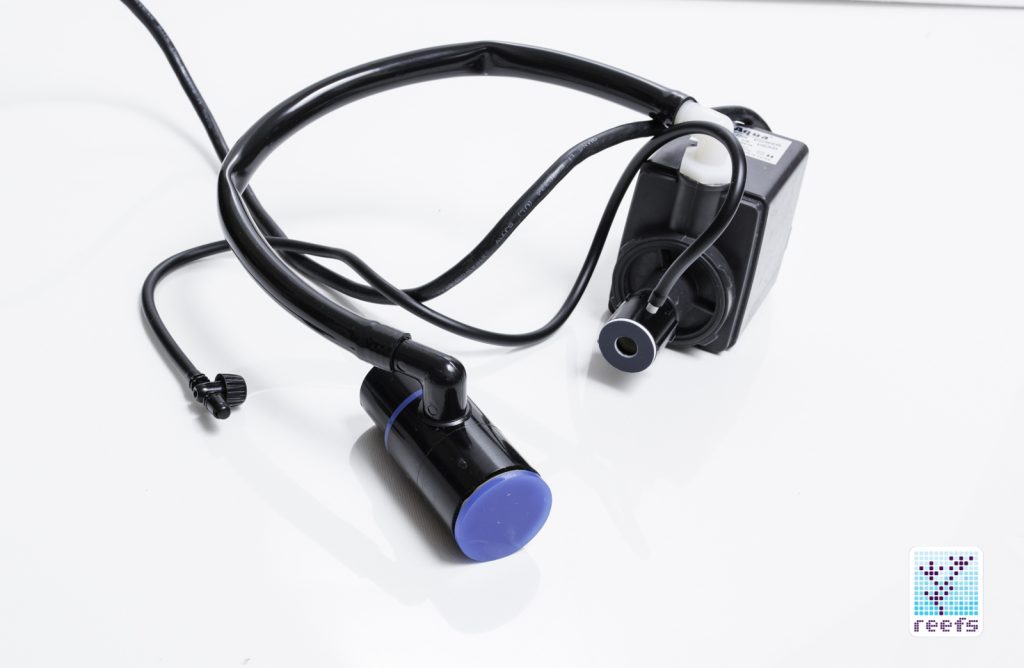
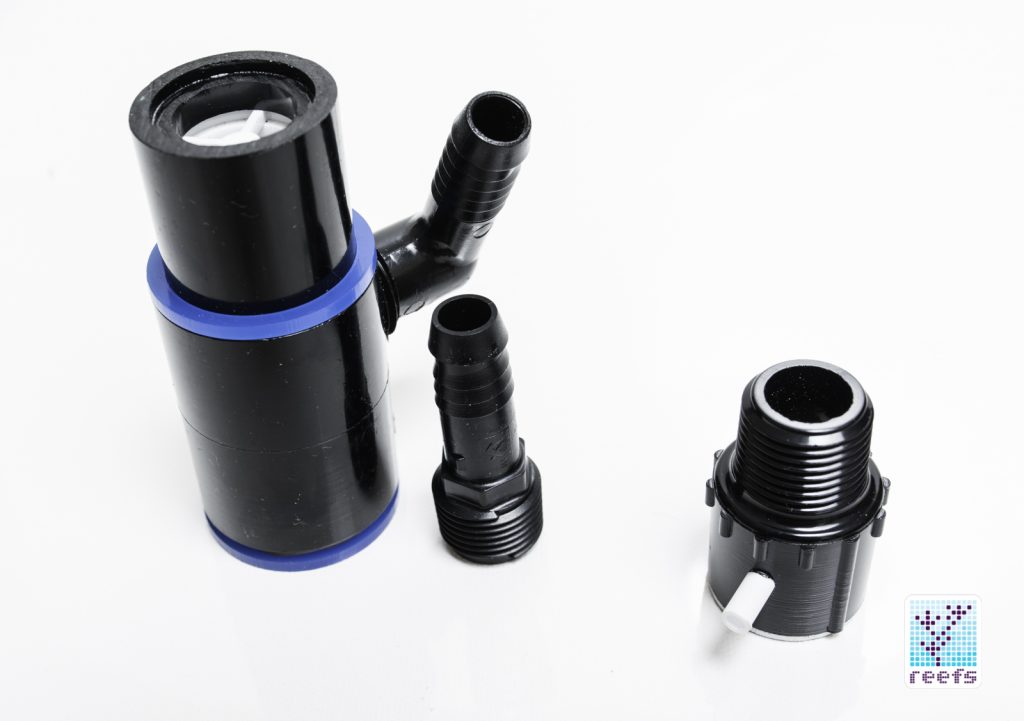
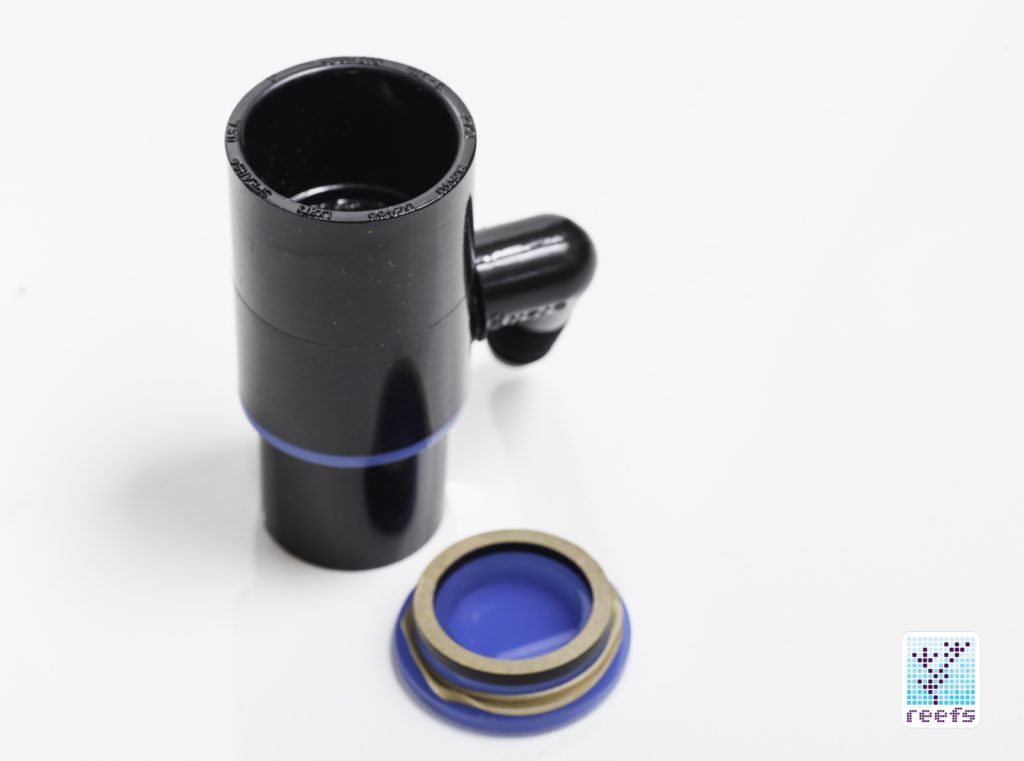
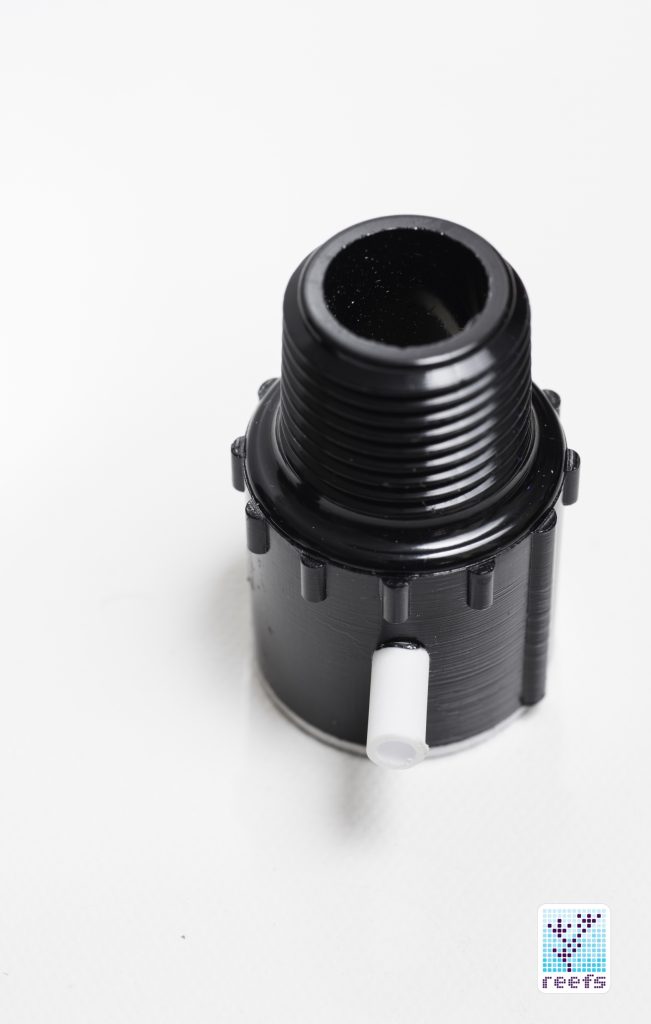
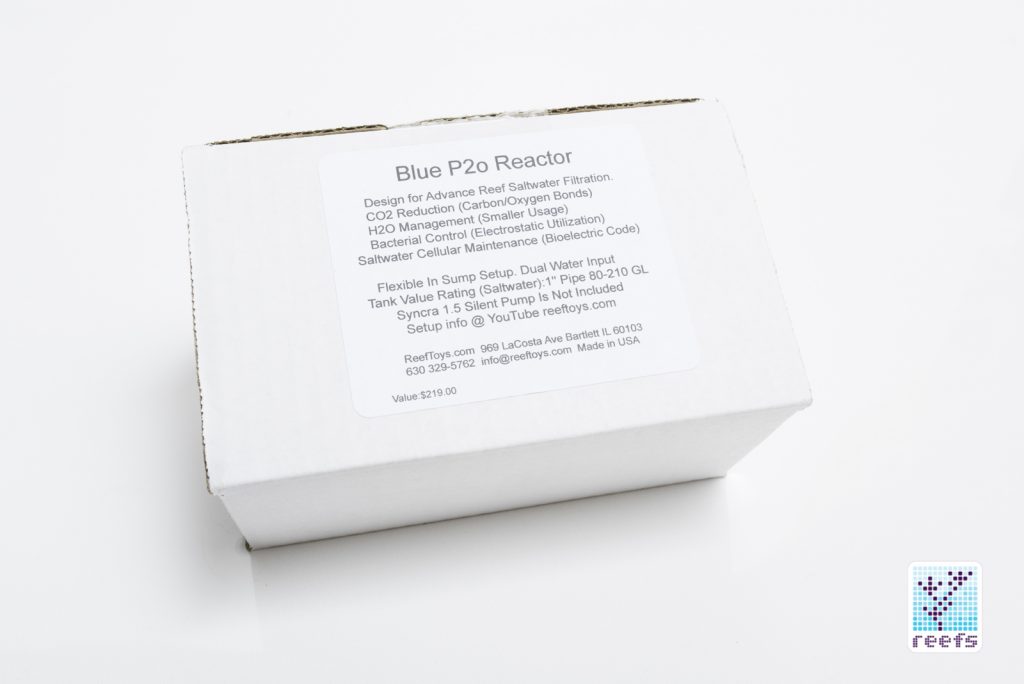
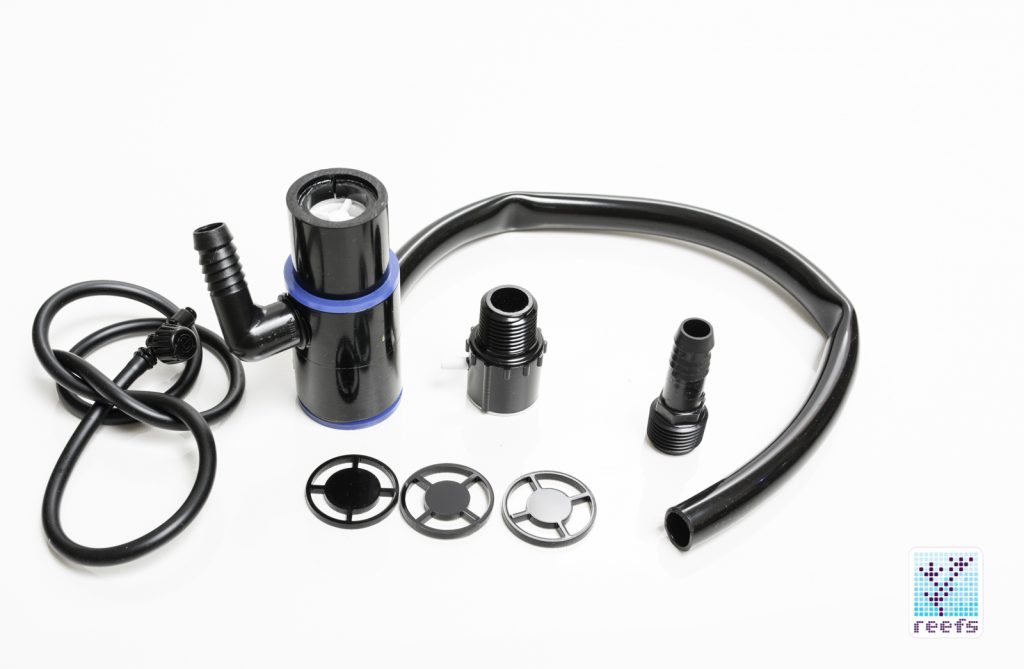
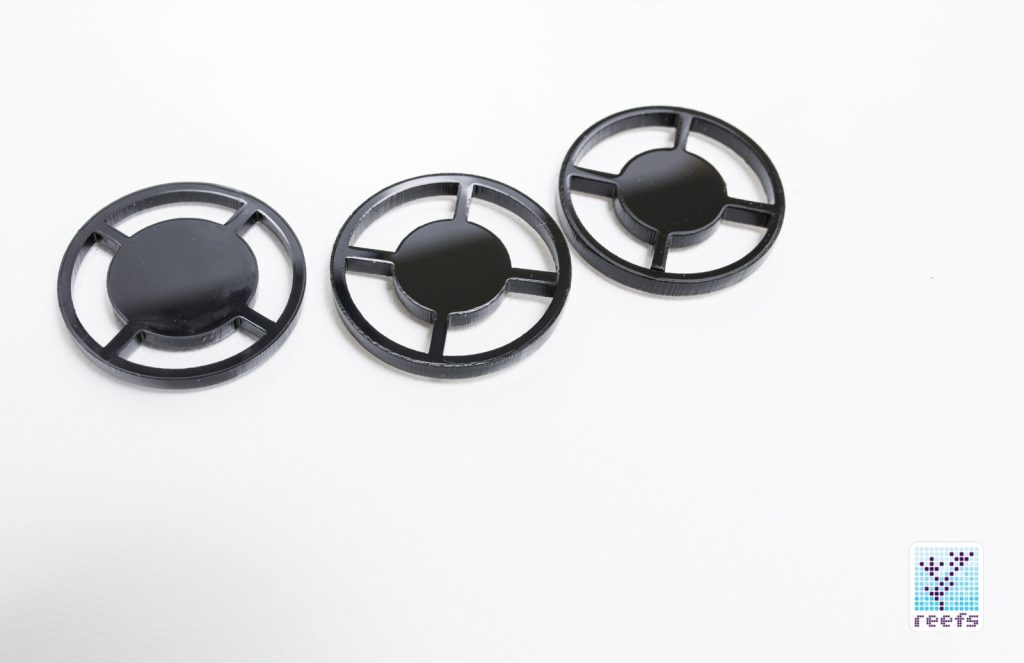
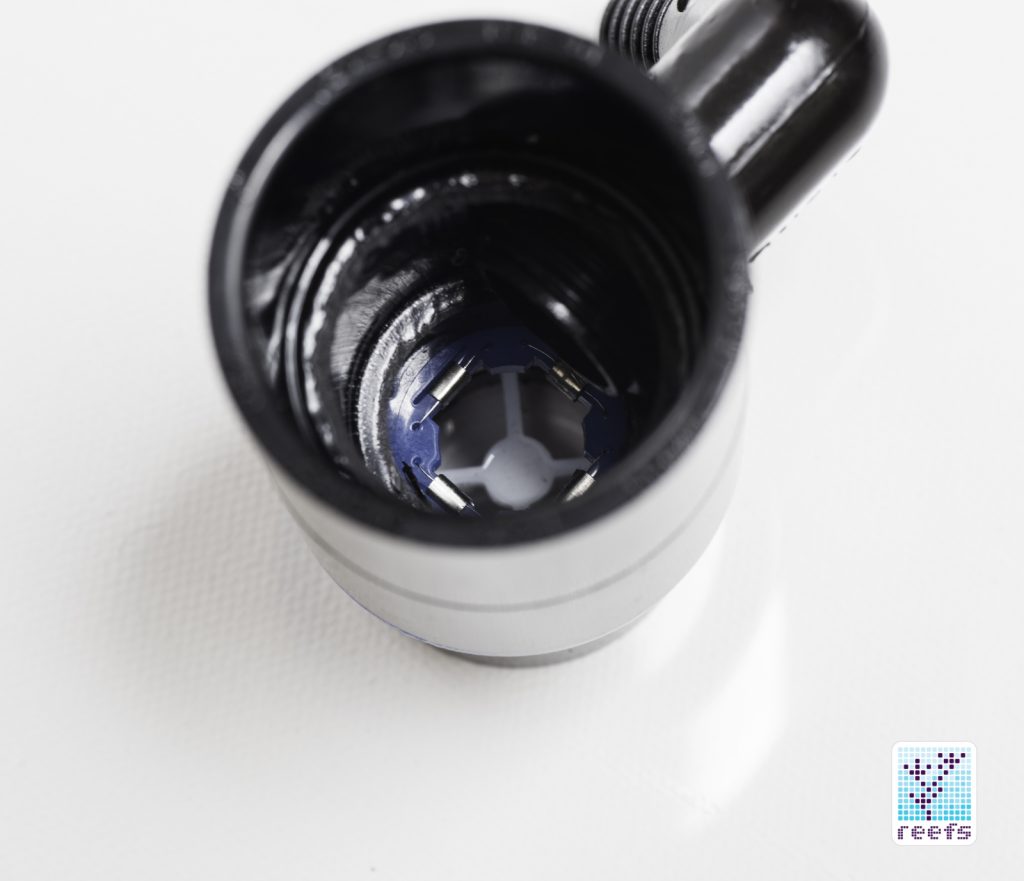









If a product is too “complex” for the company/manufacturer to take the time to properly explain, but instead uses time/money/advertising making wild, “game-changing”, revolutionary (yet ambiguous) claims….well…best of luck producing a profit with this business model. From my experience us hobbyists are hard to pull a “fast one” over. I am not doubting this product does all it claims (ok ok, that’s a lie), but would like to understand exactly how it works in our little marine environments, and see the proof (facts, evidence, credibility, etc…) before coughing up the large asking price. Thanks to Marcin Smok for the well done review; the article was great despite the little info you had and the complete lack of data from any previous testing! And I hope I’m wrong about the product and it’s claims….but until someone (presumably the company) can show evidence, I guess I will be the hopeful skeptic!
If you have any questions about this product please call us directly .
Thank you very much
https://uploads.disquscdn.com/images/c9ee9769b2d7e36f4db1a975eaad987616adc3faac471618252cc3d1ae4dacd5.png https://uploads.disquscdn.com/images/fa8d24cf82a135dea9c9989d92879d2958460df3f823673c73d5412cee60b565.png
https://youtu.be/9KR2xZP5LdA
Thank you for wonderful review
Reeftoys.com
do you have any statistical data about this product?
i mean what is changed when you setup this product to a reef aquarium .
did ph go upper levels 0,1 or 0,4 ?
https://uploads.disquscdn.com/images/c9ee9769b2d7e36f4db1a975eaad987616adc3faac471618252cc3d1ae4dacd5.png https://uploads.disquscdn.com/images/fa8d24cf82a135dea9c9989d92879d2958460df3f823673c73d5412cee60b565.png